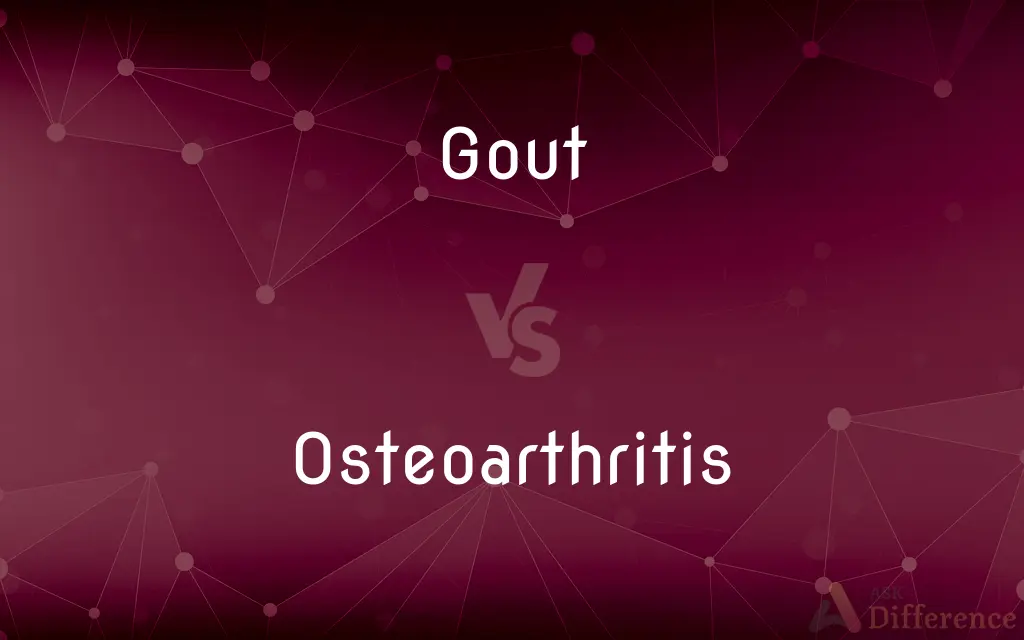Gout vs. Osteoarthritis — What's the Difference?

Difference Between Gout and Osteoarthritis
ADVERTISEMENT
Compare with Definitions
Gout
Gout is a form of inflammatory arthritis characterized by recurrent attacks of a red, tender, hot, and swollen joint. Pain typically comes on rapidly, reaching maximal intensity in less than 12 hours.
Osteoarthritis
Osteoarthritis (OA) is a type of degenerative joint disease that results from breakdown of joint cartilage and underlying bone. The most common symptoms are joint pain and stiffness.
Gout
A disturbance of uric-acid metabolism occurring chiefly in males, characterized by painful inflammation of the joints, especially of the feet and hands, and arthritic attacks resulting from elevated levels of uric acid in the blood and the deposition of urate crystals around the joints. The condition can become chronic and result in deformity.
Osteoarthritis
A chronic disease characterized by progressive degeneration of the cartilage of the joints, occurring mainly in older persons. Also called degenerative joint disease.
Gout
A large blob or clot
"and makes it bleed great gouts of blood" (Oscar Wilde).
ADVERTISEMENT
Osteoarthritis
(pathology) A form of arthritis, affecting mainly older people, caused by chronic degeneration of the cartilage and synovial membrane of the joints, leading to pain and stiffness.
Gout
An extremely painful inflammation of joints, especially of the big toe, caused by a metabolic defect resulting in the accumulation of uric acid in the blood and the deposition of urates around the joints.
Osteoarthritis
Chronic breakdown of cartilage in the joints; the most common form of arthritis occurring usually after middle age
Gout
A spurt or splotch.
Gout
(rare) A disease of wheat and cornstalks, caused by insect larvae.
Gout
(obsolete) taste; relish
Gout
(intransitive) To spurt.
Gout
A drop; a clot or coagulation.
On thy blade and dudgeon gouts of blood.
Gout
A constitutional disease, occurring by paroxysms. It consists in an inflammation of the fibrous and ligamentous parts of the joints, and almost always attacks first the great toe, next the smaller joints, after which it may attack the greater articulations. It is attended with various sympathetic phenomena, particularly in the digestive organs. It may also attack internal organs, as the stomach, the intestines, etc. It is an inherited disease of purine metaboism, which causes an increased level of uric acid in the blood, and leads to deposition of crystals of sodium urate in cartilage within joints and in connective tissue. It can be alleviated by a diet low in purines, and is treated by drugs which block formation of uric acid.
Gout
A disease of cornstalks. See Corn fly, under Corn.
Gout
Taste; relish.
Gout
A painful inflammation of the big toe and foot caused by defects in uric acid metabolism resulting in deposits of the acid and its salts in the blood and joints
Share Your Discovery

Previous Comparison
Deacon vs. Overseer
Next Comparison
Euphonium vs. Tuba













































